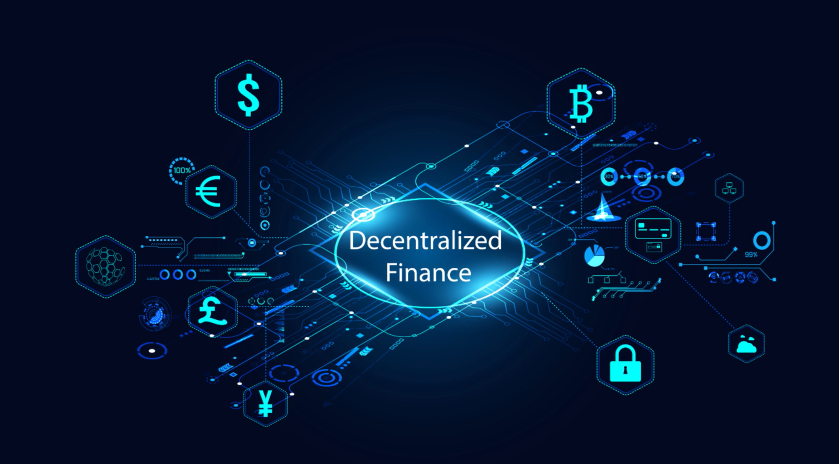This post breaks down the 2023 State of Crypto report by a16zcrypto and examines insightful developments, trends, and data.
By the end of this breakdown, you'll have a solid idea of what's happening in the blockchain world and where our precious space is heading.
So, let's get right into it!
You've likely seen that 2022 has proven to be an extremely challenging year for the blockchain space and its reputation, with crypto-friendly banks falling bankrupt like dominos, major exchanges collapsing into rubble, and scandalous headlines fuelling speculation.
So how has the blockchain world fared in light of these events? Let's dive into the report.
DeFi and NFT Utility are on the Rise
According to the report, DeFi and NFT spaces are regaining some momentum after experiencing a considerable decline from their explosive heights of 2021.
Users are moving past the smokescreen of speculation and embracing the unique use cases in areas such as on-chain gaming, art, and collectibles.
Indeed, NFT activity is making a comeback, with a 90% increase in unique buyers who purchased at least one new NFT per month since the end of 2022.
Equally, decentralized exchanges have doubled their volume and are trading over $100B monthly in April 2023, compared to $50B around the end of 2022.
So what seems to be behind this new trend?
The recent shift towards decentralized networks is driven by investors' growing confidence in the potential of these networks to overhaul the macroeconomic system.
Having witnessed the collapse of centralized entities within the legacy banking system, investors are seeking alternatives that offer greater transparency, resilience, and control over their financial assets.
One notable example is the rise of decentralized exchanges (DEXs) like Uniswap, which have gained significant traction in the market.
In a remarkable turn of events, Uniswap has outperformed CoinBase, the largest centralized exchange in the US, for three consecutive months from March to May 2023.
This shift in performance underscores the rising popularity of decentralized platforms and the trust investors place in them.
So, what's driving this new trend? Several factors contribute to the appeal of decentralized networks.

Firstly, they embody the principles of decentralization, ensuring that power is distributed among participants rather than concentrated in the hands of a few centralized authorities.
This feature resonates with investors who value autonomy and a fairer economic landscape.
Secondly, decentralized networks offer enhanced transparency, enabling users to track transactions and verify the integrity of the system.
This transparency is in stark contrast to the opaqueness of traditional financial systems, where centralized intermediaries often control and manipulate information.
Furthermore, decentralized networks leverage blockchain technology, which provides robust security measures and immutability.
These features offer investors peace of mind, knowing that their assets are protected against hacking, fraud, and arbitrary changes.
Lastly, the potential for greater financial inclusivity is a significant driving force behind the shift toward decentralized networks.
By eliminating intermediaries and lowering entry barriers, decentralized platforms open up opportunities for individuals historically excluded from traditional financial systems.
As this trend continues, decentralized networks are poised to reshape the financial industry, ushering in a new era of democratization, transparency, and financial empowerment.
Monetization on Web3 Vs Web2
The report goes on to highlight how monetization on Web3 and Web2 couldn't be more different.
In the world of Web2, monetization often revolves around traditional advertising models, data silos, and centralized platforms extracting value from user interactions.
However, Web3 flips the script entirely. It empowers individuals to directly monetize their contributions and creations through decentralized finance (DeFi), non-fungible tokens (NFTs), decentralized applications (dApps), and more.
With Web3, the power to control and profit from your own digital assets and engagements is in your hands, revolutionizing the way we perceive and participate in the digital economy.
Unfortunately, the benefits of decentralization continue to elude many people yet unfamiliar with the concept or find the information surrounding it intimidating or unclear.
In this following report breakdown, we'll crystallize a core benefit that decentralization offers users and creators aiming to monetize.

According to the report, users have vastly more power and earn a more significant share of revenue on Web3 platforms compared to Web2.
For instance, Facebook, Twitter, and Instagram take home 100% of the revenue generated by user activity, while decentralized networks like Uniswap and Ethereum take no more than 0.30%!
But why is this the case?
Decentralized networks like Uniswap and Ethereum allow users to take home significantly more revenue by removing intermediaries and enabling direct peer-to-peer transactions.
This decentralized model allows users to earn rewards for participating in the network and contributes to the overall community governance and democratization of the Web3 ecosystem.
But how does Web2 compare?
In Web2, the revenue model relies heavily on advertising, and data monetization, leaving users with a smaller share of the value they generate.
The centralized nature of these platforms allows them to exercise control over transactions, content, and user data, resulting in a substantial disparity between the platform's revenue and the earnings received by its users.
Consider this stunning statistic.
With its almost 4 billion users, Facebook funneled creator revenues of over $1 Billion back into their platform while NFT marketplaces with just 10's of millions of users paid out over $2 Billion in royalties to creators.
Now, let's delve into the next section of the report, which sheds light on the future of blockchain technology.
This crucial analysis will provide insights into blockchain scaling strategies to attract a larger user base, expand infrastructure, and accommodate significantly higher transactional volumes.
Blockchain Scaling For The Future
As discussed in my previous article, the blockchain trilemma involves sacrificing scalability to achieve unprecedented levels of decentralization and security.
Several solutions have emerged to address the trilemma, including Layer 2, sharding, and zk rollups, each offering varying levels of success.
As developers strive to tackle the blockchain trilemma, they are increasingly turning to Layer 2 (L2) chains as a promising solution.
L2 chains provide a means to boost scalability while inheriting the robust security properties of Layer 1 (L1) chains like Ethereum.
This approach allows for offloading a significant portion of transactions and computations to L2, alleviating the strain on the main chain and enabling faster, more cost-effective transactions.
Additionally, the implementation of sharding and zk rollups further enhances scalability and privacy, presenting a multi-faceted approach to addressing the trilemma.
By leveraging these innovative solutions, developers are paving the way for a more scalable and efficient blockchain ecosystem.

According to the report, Layer 2 solutions are experiencing substantial growth, with L2s accounting for 7% of ETH gas fees in the first quarter of 2023 compared to 1.5% only a few months prior.
However, L2s aren't the only solutions that are expanding. Different blockchains are leveraging different scaling paths.
For example, Avalanche, NEAR, and Solana have built and continue to improve upon their own Layer 1 chains optimized for scalability.
Meanwhile, other networks like Arbitrum leverage zero knowledge rollups that bundle multiple transactions to submit a compressed data set to the main blockchain to boost throughput.
These diverse scaling approaches demonstrate the innovation and progress made across the blockchain ecosystem while underscoring the industry's commitment to addressing the scalability challenges and expanding the capabilities of blockchain technology.
The Ethereum Blockchain's Great Environmental Shift
The report outlines that one of the most significant shifts in open-source blockchain history was the Ethereum network's transition from a proof-of-work to a proof-of-stake consensus mechanism.
This major shift resulted from long-standing objections to the network's highly corrosive environmental footprint caused by the energy-intensive requirements of a proof-of-work protocol.
This environmental backlash considerably stifled Ethereum's growth, so an overhaul was required.

According to the report, Ethereum's shift to proof-of-stake has silenced critics' environmental backlashes and made it one of the most eco-friendly blockchains today.
In fact, Ethereum's energy consumption now stands at a mere 0.001% of what YouTube consumes annually, showcasing the remarkable strides made in reducing its environmental impact.
By proactively addressing these concerns, Ethereum has enhanced its sustainability and removed a significant barrier to its growth and widespread adoption.
Web3's Pattern of Growth Happens in Cycles
Let's now discuss Web3's short-term volatility and zoom out to identify the predictable patterns that define the bigger picture.
Those of us observing the crypto space over the last few years have likely noticed that the space continues evolving in continuous cycles of explosive growth, usually followed by 'crypto winters.'
These cycles are often triggered by price fluctuations of Bitcoin and other prominent cryptocurrencies that act as benchmarks guiding speculation.
They typically unfold as follows:
- The price of Bitcoin goes up
- Hype and growth speculation flare across social media
- More players, including devs & projects, dive in quickly, hoping for a slice of the profit pie
- New projects, innovations, and contributions to blockchains are created
- New projects mean more jobs, more activity in the space
- Explosive growth and further swelling of cryptocurrency and altcoin value
- Inflationary value bubbles begin to form, leading to investors withdrawing funds
- Negative speculation swells, and the downward slump commences
The report outlines how despite the short-term market movements, each cycle drives long-term technological progress and innovation in blockchain infrastructure, generating new projects and more job opportunities.

Focusing exclusively on short-term market movements can obscure the underlying trends of the Web3 world.
Ultimately, the growth in developer activity, new projects, and social media awareness will continue to push the Web3 space forward and fuel its evolution in the years to come.
I hope you gained some value from my State of Crypto 2023 breakdown article! Make sure to share the article and comment below if you have any thoughts or questions.
Talk soon!
